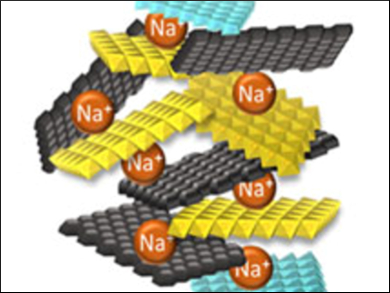Lithium ion batteries (LIBs) are everywhere, from cell phones to solar power storage to electric vehicles. In the long-term, the low abundance of lithium in the earth’s crust could cause problems with the sustainability of such batteries. The low cost and abundance of sodium make it an interesting candidate to replace lithium.
Seong Ju Hwang, Ewha Womans University, Seoul, South Korea, and colleagues have developed anode materials for NIBs. They have prepared a nanocomposite material (pictured) from colloidal suspensions of tin sulfide, titanium dioxide, and reduced graphene oxide. Adding an NaCl solution to the mixture causes electrostatic attraction between the components, resulting in the precipitation of the anode material.
The addition of TiO2 is the key to improved results: The anode materials have improved charge capacities, good rate performance, and are stable over many charge/discharge cycles. The group also showed that TiO2 improves the anode performance of a similar MoS2-graphene anode, and may be applicable in other anode systems.
- A 2D Metal Oxide Nanosheet as an Efficient Additive for Improving Na-Ion Electrode Activity of Graphene-Based Nanocomposites,
Boyeon Park, Seung Mi Oh, Xiaoyan Jin, Kanyaporn Adpakpang, Nam-Suk Lee, Seong-Ju Hwang,
Chem. Eur. J. 2017.
DOI: 10.1002/chem.201605192



